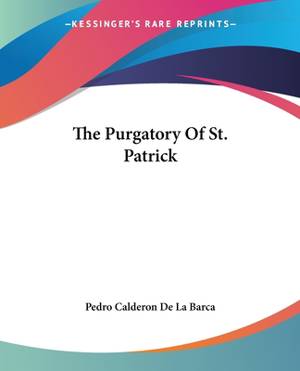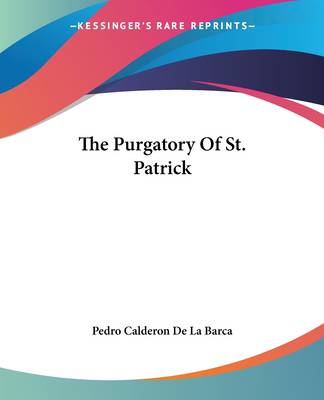
- Retrait gratuit dans votre magasin Club
- 7.000.000 titres dans notre catalogue
- Payer en toute sécurité
- Toujours un magasin près de chez vous
- Retrait gratuit dans votre magasin Club
- 7.000.0000 titres dans notre catalogue
- Payer en toute sécurité
- Toujours un magasin près de chez vous
Description
The Purgatory of St. Patrick is a play written by Pedro Calderon De La Barca, a Spanish playwright, in the 17th century. The play is based on the Catholic belief of purgatory, which is the intermediate state after death where souls are purified before entering heaven. The play follows the story of St. Patrick, the patron saint of Ireland, who is sent to purgatory by God to help a group of souls who are stuck in a state of limbo. These souls are unable to enter heaven or hell because of their sins and must be purified before they can move on. St. Patrick is accompanied by an angel who guides him through purgatory and introduces him to the souls he must help. The play is structured in a series of vignettes, each one depicting the story of a different soul and their struggle to overcome their sins. Throughout the play, Calderon explores themes of redemption, forgiveness, and the power of faith. The Purgatory of St. Patrick is considered one of Calderon's most significant works and is a classic example of Baroque theatre.LEOGAIRE. That already has been given thee; For so sad was he, believing Thou wert dead, so deep his grieving, All the past will be forgiven thee Since thou livest. Come with me, Fortune will once more embrace thee, -- In his favour to replace thee Let my happy privilege be.This scarce antiquarian book is a facsimile reprint of the old original and may contain some imperfections such as library marks and notations. Because we believe this work is culturally important, we have made it available as part of our commitment for protecting, preserving, and promoting the world's literature in affordable, high quality, modern editions, that are true to their original work
Spécifications
Parties prenantes
- Auteur(s) :
- Editeur:
Contenu
- Nombre de pages :
- 216
- Langue:
- Anglais
Caractéristiques
- EAN:
- 9781419179426
- Date de parution :
- 17-06-04
- Format:
- Livre broché
- Format numérique:
- Trade paperback (VS)
- Dimensions :
- 190 mm x 234 mm
- Poids :
- 381 g

Les avis
Nous publions uniquement les avis qui respectent les conditions requises. Consultez nos conditions pour les avis.






